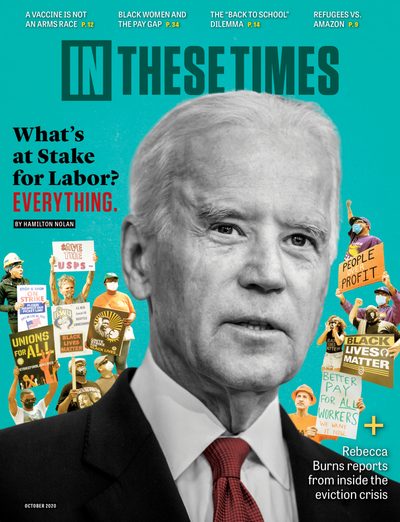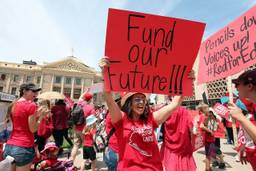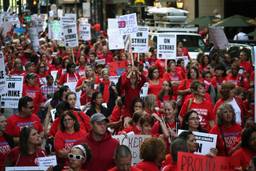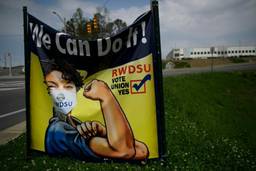What Does a “Safe Return” to School Look Like? Ask Teacher Unions.
Powerful elites are willing to sacrifice the lives and futures of millions to feed their own profits. Teachers are fighting back.
Lois Weiner and Jackson Potter
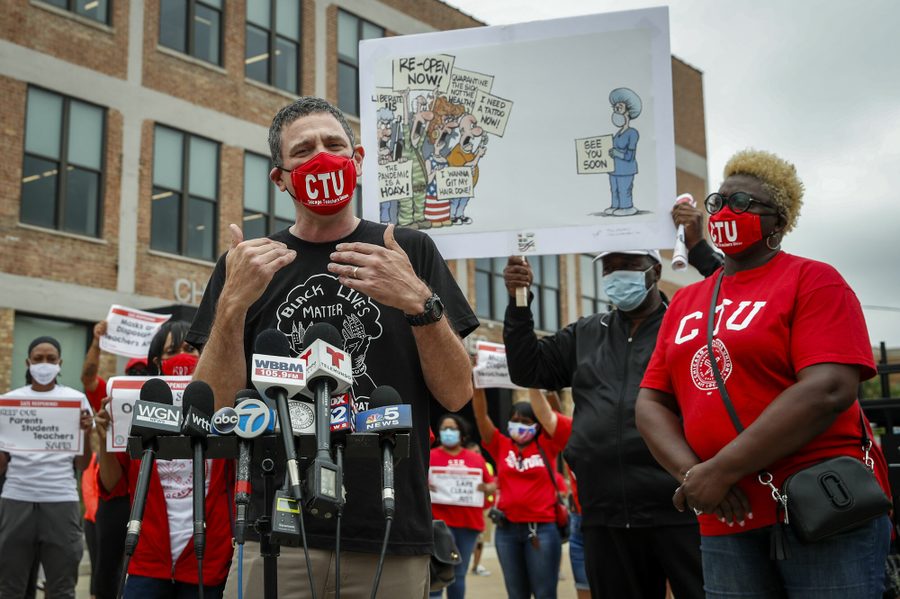
Demands for students and educators to return to in-person schooling during the pandemic are coming from Democrats and Republicans, both claiming the return is necessary not just to provide high-quality education, but to save the economy and get parents back to work. The narrative consciously exploits the needs of parents who may not have healthcare and who rely on public schools to care for and educate their children while they work. It pits parents, students, teachers and community members against one another, using (or ignoring) scientific data to suit the political purpose of moneyed interests — the bipartisan project of destroying public schools.
When Education Secretary Betsy DeVos tweets that parents “need real options for education this fall” and #SchoolChoiceNow — without providing the equipment, conditions or funds needed to make schools safe — the real message is clear. The Right is using the push to reopen as a way to intensify the privatization and marketization of education, boost profits in the educational technology sector and erode trust in public schools.
In response, teachers’ labor activism — widespread and robust in recent years — continues to emerge. Teachers organizing on social media have campaigned for various scientific standards to trigger reopening; #14DaysNoNewCases, for example, demands that campuses only reopen after going two weeks without Covid-19 infections. The Demand Safe Schools Coalition wants class sizes limited to 10 to 15 students, ventilation that meets guidelines from the Centers for Disease Control and Prevention, clean and socially distant school transportation, supplies of personal protective equipment and ample Covid-19 testing. Activists in dozens of cities rallied August 3 for these and other demands, resisting hasty, underfunded and unsafe reopenings that impose harm, especially on low-income students of color. The campaign #OnlyWhenItsSafe advocates reopening only if it is “equitable and healthy for everyone,” in the words of Boston Teachers Union President Jessica Tang.
For many teachers union activists advocating for social justice, an “equitable” school is one that can address the full range of human needs required to educate all children well. Children who are hungry and on the verge of eviction — or living in temporary shelters — cannot be expected to succeed academically, whether remotely or in person. An equitable school, for example, would support the Black Lives Matter movement in its call to replace police with counselors, nurses, social workers and restorative justice personnel. It would also support the cancellation of rents and mortgages, a moratorium on evictions and foreclosures, and direct cash assistance for the unemployed and those unable to work. The nation’s second and third largest teachers unions, in Chicago and Los Angeles, helped organize protests against financial targets like the Chamber of Commerce, the Federal Reserve, the Board of Trade and big banks, calling for interest-free loans and higher taxes on the rich to fund safe school reopenings.
The American Federation of Teachers (AFT) and the National Education Association (NEA) have verbally supported some of the movement’s demands. For example, AFT has endorsed a union local’s right to strike when necessary to prevent reopenings that endanger lives. But both unions have also embraced the push from Wall Street and Silicon Valley for educational technology to control learning and profit from student data. The pandemic CARES Act, endorsed by both unions, encourages funneling limited public education funding into software for distance learning, controlled by corporations. Ed tech corporations and liberal think tanks are now pushing software for “personalized learning” and “social and emotional development” that collects data that can be used for profit and surveillance— while simultaneously distorting and appropriating ideals about making learning individual and caring for children’s needs. Though some teachers are starting to use their local and state unions, like the Massachusetts Teachers Association, to push back against the NEA and AFT positions, the dangers of ed tech in reopening plans and education remain mostly unrecognized.
Powerful elites are willing to sacrifice the lives and futures of millions of people to feed their own profits. Even beyond the life-and-death risk to their personal health, teachers’ struggles mark resistance to the perpetuation of this unequal, unjust society.
For a response to this piece, see “All the Options for Schooling Are Bad — But We Have to Choose Safety” by Chandra Thomas Whitfield.
Lois Weiner is the author The Future of Our Schools: Teachers Unions and Social Justice (Haymarket, 2012). An independent researcher and consultant, she writes widely on education and teachers unions.
As a high school student in Chicago in 1995, Jackson Potter led a walk-out to push for equitable school funding in Illinois. He later taught at Englewood High School and was the union delegate there when the district slated the school for closure. He and Al Ramirez formed the Caucus of Rank and File Educators (CORE) in 2008 and the Grassroots Education Movement (with other community organizations) shortly after. He and future Chicago Teachers Union president Karen Lewis served together as the first co-chairs of CORE. After working as CTU’s staff coordinator for eight years, Jackson went back to teaching from 2018 to 2022 and now serves as the union’s vice president.
